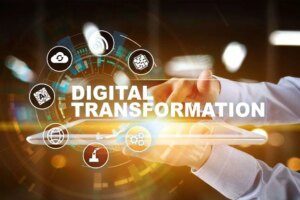With our plans and courses, you get to determine the pace you learn at and the amount of time you devote to coding — whether you spend weeks or years working towards your goals is entirely up to you. As you’ve probably noticed by now, getting large quantities of high quality labeled data is hard. This helps you boost customer retention and maximize the impact of your marketing campaigns. The tool effectively leverages large amounts of raw data and predicts revenue-impacting risks and outcomes, such as customer churn, LTV, etc.

Marketers use ML to understand customer behavior and identify trends in large datasets, allowing them to create more efficient marketing campaigns and improve marketing ROI. In today‘s post, you’ll learn how machine learning can supercharge your marketing team. We’ll also share actionable examples from real-world companies implementing machine learning and noticing significant improvements. The fundamental principle of Machine Learning is to build mathematical models that can recognize patterns, relationships, and trends within dataset.
What’s it like to go from being Chief Decision Scientist at Google to being, well… just me?
First, the labeled data is used to partially train the Machine Learning Algorithm, and then this partially trained model is used to pseudo-label the rest of the unlabeled data. Finally, the Machine Learning Algorithm is fully trained using a combination of labeled and pseudo-labeled data. Artificial Intelligence and Machine Learning are correlated with each other, and yet they have some differences. Artificial Intelligence is an overarching concept that aims to create intelligence that mimics human-level intelligence. Artificial Intelligence is a general concept that deals with creating human-like critical thinking capability and reasoning skills for machines. On the other hand, Machine Learning is a subset or specific application of Artificial intelligence that aims to create machines that can learn autonomously from data.
- They’ve created a lot of buzz around the world and paved the way for advancements in technology.
- A Bayesian network, belief network, or directed acyclic graphical model is a probabilistic graphical model that represents a set of random variables and their conditional independence with a directed acyclic graph (DAG).
- These neural networks have multiple layers that can learn increasingly abstract concepts, allowing DL algorithms to handle unstructured data such as images and text more effectively than traditional Machine Learning algorithms.
- The Machine Learning process begins with gathering data (numbers, text, photos, comments, letters, and so on).
- New input data is fed into the machine learning algorithm to test whether the algorithm works correctly.
Breakthroughs in AI and ML seem to happen daily, rendering accepted practices obsolete almost as soon as they’re accepted. One thing that can be said with certainty about the future of machine learning is that it will continue to play a central role in the 21st century, transforming how work gets done and the way we live. Traditional programming and machine learning are essentially different approaches to problem-solving. In other words, machine learning is a specific approach or technique used to achieve the overarching goal of AI to build intelligent systems.
Machine learning applications for enterprises
Other common ML use cases include fraud detection, spam filtering, malware threat detection, predictive maintenance and business process automation. Machine learning (ML) is a type of artificial intelligence (AI) focused on building computer systems that learn from data. The broad range of techniques ML encompasses enables software applications to improve their performance over time. Bringing a new drug to market can cost around $3 billion and take around 2–14 years of research. Designing new molecules is the main reason for the cost and time — it’s an incredibly labor-intensive and complex process.
In supervised machine learning, algorithms are trained on labeled data sets that include tags describing each piece of data. In other words, the algorithms are fed data that includes an “answer key” describing how the data should be interpreted. For example, an algorithm may be fed images of flowers that include tags for each flower type so that it will be able to identify the flower better again when fed a new photograph. Machine learning refers to the general use of algorithms and data to create autonomous or semi-autonomous machines.
How businesses are using machine learning
In the most basic terms, the machine learning algorithms are meant to create intelligent programs that are able to get trained for specific tasks by themselves and learn better ways to complete the tasks faster and with precision. It’s kind of similar like creating algorithms that replicate the human mind, with the ability to learn, adapt, and make intelligent decisions. For the most part, the learning process of the machine is completed through supervised or unsupervised training with a large volume of the training dataset. The quality and volume of the data used to train machines are directly related to the preciseness of the machine learning models.
These self-driving cars are able to identify, classify and interpret objects and different conditions on the road using Machine Learning algorithms. Companies and organizations around the world are already making use of Machine Learning to make accurate business decisions and to foster growth. Social media platform such as Instagram, Facebook, and Twitter integrate Machine Learning algorithms to help deliver personalized experiences to you.
Training, validating, and testing data for machine learning
These models have been trained by using labelled or unlabelled data, and their performance has been evaluated based on how well they can generalize to new, that means unseen data. Imagine that a company has a recruiting process which looks at many thousands of applications and separates them into two groups — those who have ‘high potential’ to receive a job with the company, and those who do not. Imagine that we want to learn and predict which applications are considered ‘high potential’. We obtain some data from the company for a random set of prior applications, both those which were classified as high potential (positive examples) and those who were not (negative examples). We aim to find a description that is shared by all the positive examples and by none of the negative examples.
The features are then used to create a model that categorizes the objects in the image. With a deep learning workflow, relevant features are automatically extracted from images. In addition, deep learning performs “end-to-end learning” – where a network is given raw data and a task to perform, such as classification, and it learns how to do this automatically.
How Do You Decide Which Machine Learning Algorithm to Use?
Tuff is an SEO marketing agency that achieved significant ARR growth in just three years. Initially, they struggled to create client pitches due to the lack of a reliable SEO tool for thorough competitor and keyword research. Devex, based in Washington, D.C., is a major provider of recruitment and business development services for global development. With the tool’s predictions, the client identified a 25% gap on average between the actual user lifetime value and what they expected users’ value to be. By accessing historical data, it can determine the best time for posting and the optimal frequency of content distribution to avoid overwhelming the audience.

Websites are able to recommend products to you based on your searches and previous purchases. The application of Machine Learning in our day to day activities swarm learning services have made life easier and more convenient. They’ve created a lot of buzz around the world and paved the way for advancements in technology.
How Does Machine Learning Work?
In many ways, these techniques automate tasks that researchers have done by hand for years. In traditional programming, a programmer writes rules or instructions telling the computer how to solve a problem. In machine learning, on the other hand, the computer is fed data and learns to recognize patterns and relationships within that data to make predictions or decisions. This data-driven learning process is called “training” and is a machine learning model.
Data Structures and Algorithms
HubSpot’s content assistant is a powerful tool that allows marketers to supercharge content operations and improve productivity. As the market is saturated with ML tools, we have narrowed down the list and included only the best ones. Here are five ML tools that will help you streamline your marketing efforts and maximize your profit. They collaborated with Phrasee, a tool that picks the most relevant brand voice and generates content ideas based on that. The collaboration cut down costs on hiring actors since the tool offers an avatar as a replacement. Cyber Inc managed to produce video content two-times faster and expanded its global reach.
Deep learning models can automatically learn and extract hierarchical features from data, making them effective in tasks like image and speech recognition. Machine learning also performs manual tasks that are beyond our ability to execute at scale — for example, processing the huge quantities of data generated today by digital devices. Machine learning’s ability to extract patterns and insights from vast data sets has become a competitive differentiator in fields ranging from finance and retail to healthcare and scientific discovery. Many of today’s leading companies, including Facebook, Google and Uber, make machine learning a central part of their operations. Machine learning is a powerful technology with the potential to transform how we live and work.

